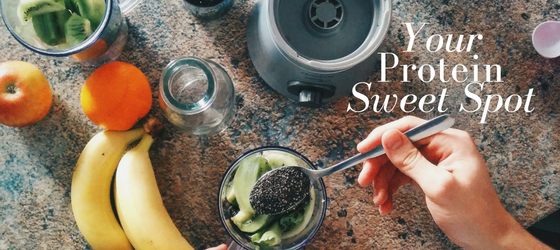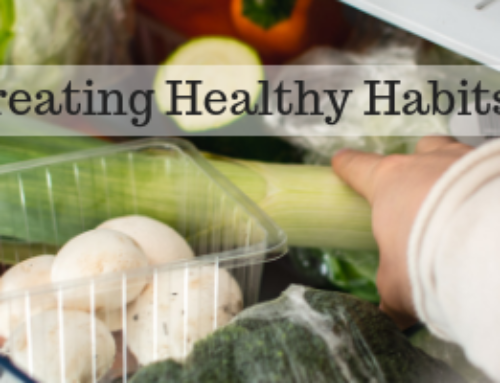How much protein should one get each day? This has been a hotly debated question for many years, if not decades in the nutrition field. Let’s start with some basics though. The recommended dietary allowance or RDA is the amount needed to maintain the health of 97 to 98 percent of individuals in groups according to age and gender. The RDA for protein is a modest 0.8 grams of protein per kilogram of body weight. That translates to an average of 46 grams of protein daily for women and 56 grams of protein for men. Keep in mind though, that the RDA represents the minimum amount you need to keep from getting sick — not the specific amount you are supposed to eat every day.
Experts in the field often recommend more protein per day than the current RDA to optimize intake. Aiming for about 15- 25% of total daily calories can help an individual to hit this sweet spot, although it really depends on a person’s age, sex, and activity level. For instance, an athlete will need more protein than the average middle-aged person who works out 3 times per week, and the person who works out 3 times per week will need more protein than the average sedentary person.
Get tested to find out your personalized protein requirement
In my practice, I take it a step further. I make individualized protein recommendations based on each person’s total “lean” body weight, also called lean tissue. To determine lean tissue, I preform body fat analysis on my clientele which gives me exact indications of how much lean tissue a client has, as well as fat tissue. Protein recommendations are then made based on test results. Why is this important? Because the more lean tissue a person has, of which a significant part is muscle, the more dietary protein that individual will need. See, lean tissue is more metabolically active than fat tissue, and because it is largely made of protein, it takes a certain amount of dietary protein to maintain that lean tissue on a day-to-day basis. I recommend about .7 grams of dietary protein per day, per pound of lean tissue. Just to clarify, that is per pound of “lean”, not per pound of total body weight. If a person is more active, they will need a bit more, and if a person is more sedentary, they will need a bit less. Targeting protein intake on lean tissue is much better than overall weight because it is individualized to the body composition of the individual. For instance, there could be two men who both weigh 200 pounds, but one has 15 pounds of body fat, and the other has 60 pounds of body fat. The man who is 7.5% body fat is going to need considerably more protein to help maintain his muscle than the man who is 30% body fat. If you live in the Seattle area, find out what your body fat percentage is and what your optimal daily protein intake should be by scheduling a body fat analysis with me today!
Hit this LINK to schedule a body fat analysis.
Timing your protein intake
To optimize your protein intake, you should not only consider your total daily consumption, but also the timing of your intake. In America, it is very common to skimp on protein at breakfast, eat a bit of protein at lunch, and pack on the protein at dinner. However, physiologically, it is best to eat a moderate amount of protein with each meal. In fact, a recent study from the Journal of Nutrition found that people who ate 30 grams of protein at breakfast, lunch, and dinner saw more muscle protein synthesis than those that ate less protein at the beginning of the day, but loaded up on protein at dinner. Now let’s be clear, you do need to do some kind of resistance training exercise, the most common being weight lifting, to add lean tissue to your frame. You can’t just eat more protein and expect gains. This goes for muscle, but also bone (another part of total lean mass) – I’m talking to you ladies out there who need maintain your bone density! Hit the weights or do some form of resistance training.
Breakfast is the one meal that seems to be the most challenging for people to meet their protein goal. If you are used to eating cereal for breakfast, which is low in protein, switching over to foods like Greek yogurt, cottage cheese, or eggs can help to boost breakfast protein intake. Another great and easy idea is to make a protein smoothie for breakfast. It is a simple way to get the protein, fiber, and the micronutrients your body needs to optimize health. To encourage you to make a smoothie for breakfast, or “high-five” you for already being in the habit, I am offering 15% off my favorite protein powders in my on-line store until October 15th! More details below.
Protein Foods
So, what foods give you the most bang for the buck in the protein department? Here is a list of higher protein foods, and how many grams of protein you get per serving:
3 ounces (the size of a deck of cards) of fish, lean poultry, lean beef = 21 grams
¼ cup protein powder = 20 grams (depends on brand).
1 egg = 6 grams
2 eggs = 12 grams
1 cup of milk = 8 grams
½ cup cottage cheese = 15 grams
1 cup low-fat Greek yogurt = 20 – 25 grams
1 cup of cooked beans = 15 grams
1 cup of cooked lentils = 15 grams
½ cup tofu = 10 grams (depends on brand – firm tofu has more protein).
¼ cup unsalted nuts = 7 grams
2 T peanut butter = 8 grams
2 T almond butter = 7 grams
Make a protein smoothie for breakfast
Using a protein powder to make a smoothie for breakfast, or post-workout snack can be an excellent way to meet your protein goals. My favorite Designs for Health protein powders (available in my webstore) use raw materials of the highest quality. The whey protein in the Whey Cool and Paleomeal products comes from cows that graze on grass, and are never given steroids or antibiotics. They also have a new protein product that I’m really liking that uses organic pea protein called Organic Pure Pea. Here are the details on how to save.
Until October 15th, enjoy 15% off my favorite Protein Powders by using this code at checkout: PROTEIN
Protein powders on sale include the vanilla and chocolate versions of: Paleomeal, PaleoMeal DF (Dairy Free), Organic Pure Pea, and Whey Cool.
Click here to see a Full Listing of Shana’s Favorite Protein Powders that are available for 15% Off when you use the code PROTEIN at checkout. Also, shipping is FREE! Just choose that shipping option at checkout.
Please note: If you have never purchased through my store before, you will have to hit the “Sign-Up” button in the upper right hand corner of the webstore page to see pricing and purchase.
Please contact me if you have any questions.
As always, if you enjoyed this blog post, please share with family or friends.






